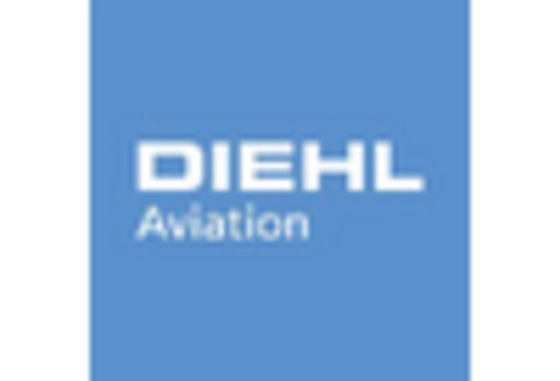Modular Design Trends
Modular design trends are gaining traction within the Aircraft Interiors Market, offering flexibility and customization in cabin layouts. This approach allows airlines to adapt their interiors based on specific routes, passenger demographics, and seasonal demands. The modular design enables quick reconfiguration of seating arrangements and amenities, which can enhance operational efficiency and reduce downtime during maintenance. Market analysis suggests that the modular interiors segment could account for a substantial share of the overall Aircraft Interiors Market, driven by the need for adaptability in a competitive landscape. Additionally, this trend supports airlines in optimizing space utilization, thereby improving passenger comfort and overall satisfaction. As airlines continue to seek innovative solutions, modular design trends are likely to play a crucial role in the evolution of the Aircraft Interiors Market.
Regulatory Compliance
Regulatory compliance is a critical driver in the Aircraft Interiors Market, as manufacturers and airlines must adhere to stringent safety and quality standards. Regulatory bodies impose guidelines that govern materials, design, and manufacturing processes to ensure passenger safety and comfort. Compliance with these regulations often necessitates investment in advanced technologies and materials, which can drive innovation within the market. For instance, the Federal Aviation Administration (FAA) and the European Union Aviation Safety Agency (EASA) have established specific requirements for cabin safety, which influence design choices. The need for compliance may also lead to increased costs, but it ultimately enhances the credibility and reliability of the Aircraft Interiors Market. As regulations evolve, companies must remain agile to adapt to new standards, thereby fostering a culture of continuous improvement and safety.
Sustainability Initiatives
The Aircraft Interiors Market is increasingly influenced by sustainability initiatives, as manufacturers and airlines strive to reduce their environmental footprint. This trend is driven by growing consumer awareness and regulatory pressures to adopt eco-friendly materials and practices. For instance, the use of lightweight materials not only enhances fuel efficiency but also minimizes waste during production. The market for sustainable aircraft interiors is projected to grow significantly, with estimates suggesting a compound annual growth rate of over 5% in the coming years. Airlines are investing in sustainable cabin designs, which include recyclable materials and energy-efficient lighting systems, thereby aligning with broader environmental goals. As a result, sustainability initiatives are reshaping the Aircraft Interiors Market, pushing for innovation and responsible sourcing.
Smart Technology Integration
The integration of smart technology within the Aircraft Interiors Market is transforming passenger experiences and operational efficiencies. Innovations such as in-flight connectivity, personalized entertainment systems, and advanced cabin management systems are becoming standard features in modern aircraft. Data from industry reports indicates that the demand for smart cabin solutions is expected to increase, with a projected market value reaching several billion dollars by 2027. Airlines are leveraging these technologies to enhance customer satisfaction and streamline operations, which may lead to increased loyalty and revenue. Furthermore, smart technology can facilitate real-time monitoring of cabin conditions, thereby improving safety and comfort. This trend indicates a shift towards a more connected and responsive Aircraft Interiors Market, where technology plays a pivotal role in shaping the future of air travel.
Passenger Experience Enhancement
Enhancing passenger experience is a paramount focus within the Aircraft Interiors Market, as airlines seek to differentiate themselves in a competitive environment. Factors such as cabin comfort, aesthetics, and amenities play a significant role in shaping the overall travel experience. Market data indicates that airlines investing in premium cabin interiors and personalized services are likely to see higher customer satisfaction and retention rates. Innovations such as improved seating ergonomics, ambient lighting, and noise reduction technologies are being prioritized to create a more enjoyable atmosphere. Furthermore, the rise of low-cost carriers is prompting traditional airlines to elevate their offerings, thereby intensifying competition. As a result, the emphasis on passenger experience enhancement is driving innovation and investment within the Aircraft Interiors Market, ultimately shaping the future of air travel.


















Leave a Comment